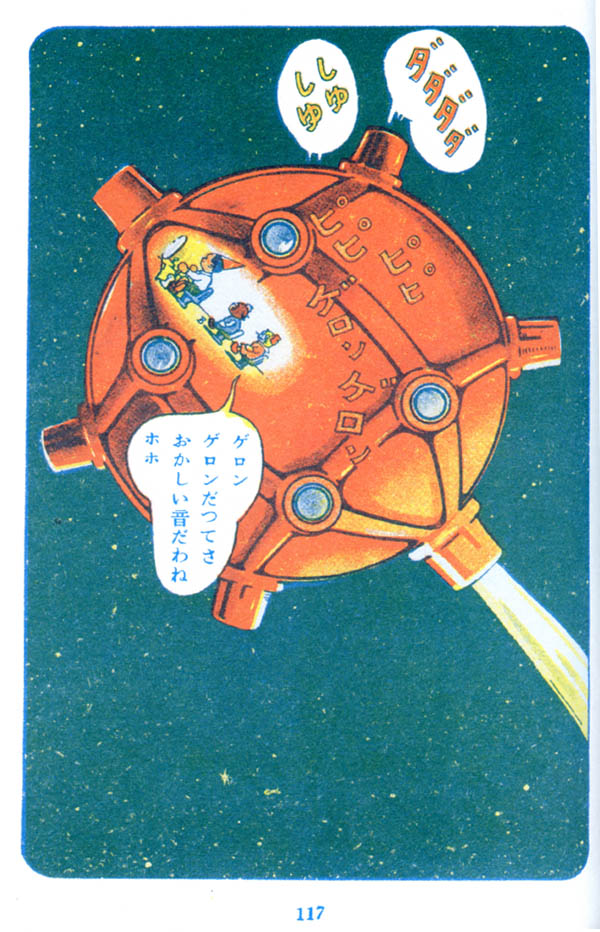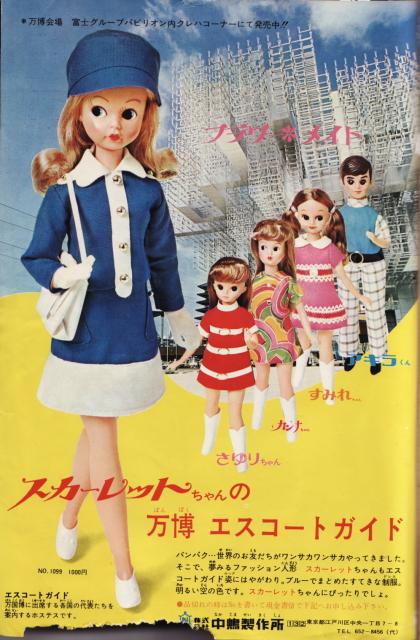 Shaenon Garrity starts the weekend off right with some art and commentary on a gorgeous and bizarre vintage manga, Kasei Tanken, which was published in 1940, a few years before Tezuka hit the scene. It’s a good example of a really different style of manga, something most of us are not used to seeing. (Art shamelessly lifted from Shaenon’s page because really, everyone should look at this.)
Shaenon Garrity starts the weekend off right with some art and commentary on a gorgeous and bizarre vintage manga, Kasei Tanken, which was published in 1940, a few years before Tezuka hit the scene. It’s a good example of a really different style of manga, something most of us are not used to seeing. (Art shamelessly lifted from Shaenon’s page because really, everyone should look at this.)
David Welsh picks the best of this week’s new manga at Precocious Curmudgeon, and the MangaCast team presents their choices for this week and last week, in case you need more.
News from Japan: ANN reports on lots of new projects. Hades Project Zeorymer Omega, based on a similarly-titled series from the 1980s, will begin serialization in the November issue of Monthly Comic Ryu. Monthly Comic Rush has announced it will carry the third iteration of the Chaos:HEAd manga. The November issue of Monthly Shonen Magazine (on sale Oct. 6) will feature an original Beck side story. And due to popular demand, or something, a new Hell Girl manga will start running in the next issue of Nakayoshi magazine.
Reviews: Sabrina Fritz reviews Bizenghast: The Novel over at Good Comics For Kids. Katherine Farmar has finally finished Death Note and she discusses whether it has lived up to the hype at the Forbidden Planet blog. Casey Brienza reviews the much-acclaimed one-shot 12 Days for ANN. Dan Polley reads vol. 30 of Naruto at Comics Village. Phil Guie checks out vol. 1 of Knights at PopCultureShock’s Manga Recon blog. Connie reads vol. 11 of Nana and vol. 17 of Tenjho Tenge at Slightly Biased Manga. Oyceter enjoys vol. 1 of Sugar Princess: Skating to Win at Sakura of DOOM. Redzie reviews vol. 1 of Kasumi for Japanator and doesn’t realize until after reading it that it’s a global manga. Tangognat samples vol. 1 of Mixed Vegetables. Emily looks at Aitte Yatsu wo Utatte Miyouka at Emily’s Random Shoujo Manga Page. New reviews up at Active Anime: Scott Campbell on vol. 11 of Path of the Assassin, Davey C. Jones on vol. 2 of Gun Blaze West, and Holly Ellingwood on Just Around the Corner. Julie checks out vol. 1 of Mixed Vegetables at the Manga Maniac Cafe. Lissa Pattillo reviews vol. 4 of Kamen Tantei, the final volume in the series, at Kuriousity. Guest reviewer Sean Gaffney reads Gatcha Gacha at Okazu. At Prospero’s Manga, Ferdinand has the same reaction I did to Bratz: Super Bratz: It’s really not that bad, but why don’t they have any noses?


